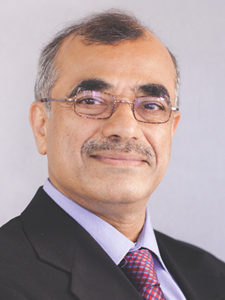
Axial spondyloarthritis (axSpa) in 2018 is not the same disease physicians learned to treat in medical school, or even in residency. Recent advances in understanding the pathology of the disease and the role played by the new bone formation is transforming clinical and therapeutic perspectives, as has the approval of the first interleukin-17 inhibitor for the treatment of axSpa and development of new treatment recommendations.
“The last treatment guidelines for axial spondyloarthritis from the ACR, the Spondylitis Association of America (SAA), and the Spondyloarthritis Research and Treatment Network (SPARTAN) were published in 2015,” said Atul Deodhar, MD, Professor of Medicine, Medical Director of Rheumatology Clinics and the Immunology Infusion Center at Oregon Health & Science University, Portland, OR. “Guidelines are a work in progress, and it is time for an update.”
The draft of the updated Guidelines for the Management of Axial Spondyloarthritis from the ACR, SAA, and SPARTAN will be introduced by Michael Ward, MD, MPH, Chief of the Clinical Trials and Outcomes Branch of the National Institutes of Health, Bethesda, MD.
Dr. Ward was the principal investigator on the update project. His discussion of the draft guidelines will open an ACR symposium on Axial Spondyloarthritis: Guidelines, Mimics & Management on Monday from 4:30 – 6:00 pm in Room W375c.
The update was spurred in part by the FDA approval of secukinumab for axSpa. The update also includes recommendations on whether or not to use treat-to-target strategy, MRI to track disease progression, and synthetic DMARDs with TNF inhibitors.
“The guidelines are very practical and are designed to help practicing rheumatologists respond to relevant clinical questions like: What should be the next treatment of choice for my patient or what should be my next investigation of choice? Or should I pay more attention to treating this patient to target with the current therapy? These are the kinds of questions we have to answer every day in the clinic.”
Lianne S. Gensler, MD, Associate Professor of Medicine and Director of the Ankylosing Spondylitis Clinic at the University of California, San Francisco, will discuss common mimics of axSpa. A variety of malignancies, infections, and other forms of arthritis can be mistaken for axSpa.
Dr. Deodhar will explore the latest findings in the pathogenesis of new bone formation in axSpa and the implications for treatment. Unlike rheumatoid arthritis, which is characterized by generalized and localized bone loss, the primary radiographic feature of axSpa is bone formation. Effective treatment should ideally slow or halt the formation of new bone.
“Large cohort studies, as well as clinical trials, have raised the tantalizing possibility that biologics such as TNF inhibitors and secukinumab might reduce the rate of new bone formation,” he said. “There is even some literature showing that the lowly NSAIDs might have some effect in slowing new bone formation.”
The problem, he continued, is that all the current data on this topic is retrospective. That leaves conclusions open to controversy and treatment recommendations less certain than clinicians or patients would like.
Even seemingly simple questions, such as the impact of physical exercise, are difficult answer in the absence of prospective data. Physical activity is widely recognized as beneficial in most forms of arthritis, but when it comes to axSpa, physical activity might be beneficial or harmful depending on the activity level, the state of the existing disease, and other factors.
“Physical activity is useful in keeping function, but there is the possibility that excessive physical activity might encourage new bone formation,” Dr. Deodhar said. “Certain cell types, particularly at the tendon insertions, are sensitive to physical trauma, which could lead to the formation of new bone in response to stress.”
The good news is that a third class of agents, JAK inhibitors, are moving into clinical trials. And the first major head-to-head drug trial in axSpa comparing secukinumab against adalimumab investigating radiographic progression, is actively recruiting worldwide.
“There is a lot of change in axial spondyloarthritis right now,” Dr. Deodhar said. “More drugs on the way, new prospective research in preventing bone formation, new guidelines. There is more excitement in this field than we have seen in many years.”


